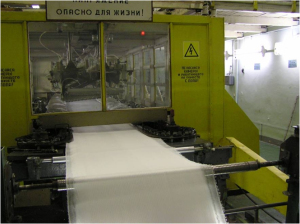▼ Reference
- Filatov Y, Budyka A, Kirichenko V. (2007) Electrospinning of Micro- and Nanofibers: Fundamentals and Appliations in Separation and Filtration Processes. Begell House Inc., USA.
- Liu Y L, He J. (2007) Bubble Electrospinning for Mass Production of Nanofibers. Int. J. Nonlinear Sciences and Numerical Simulations. 8: 393 - 396.
- Luo CJ, Stoyanov SD, Stride E, Pelan E, Edirisinghe M (2012) Electrospinning versus fibre production methods: from specifics to technological convergence. Chem. Soc. Rev. 41, 4708 - 4735.
- Teo WE, Inai R, Ramakrishna S. (2011) Technological advances in electrospinning of nanofibers. Sci. Techol. Adv. Mater. 12, 013002 (19pp).
- Varesano A, Carletto R A and Mazzuchetti G (2009) Experimental investigations on the multi-jet electrospinning process. J. Mater. Process. Technol. 209 5178
- Wang Z, Chen X, Zhang J, Lin Y J, Li K, Zeng J, Wu P, He Y, Li Y, Wang H. Fabrication and evaluation of controllable deposition distance for aligned pattern by multi-nozzle near-field electrospinning. AIP Advances 2018; 8: 075111. Open Access
- Niu H, Lin T (2012) Fiber Generators in Needleless Electrospinning. Journal of Nanomaterials. 2012, 725950. Open Access
▼ Credit and Acknowledgement
Author
Wee-Eong TEO View profile
Email: weeeong@yahoo.com
 ElectrospinTech
ElectrospinTech
